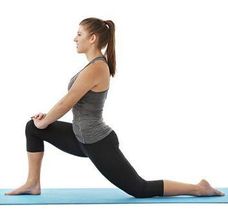Groin and Adductor Muscles

Groin injuries account for 2 - 5 % of all sports injuries & will be influenced by various factors.The complex anatomy of the groin area increases the chance of injury, affecting not only the adductor muscles, tendons & ligaments, which lie between the inner thigh & pelvis, but also bones & the reproductive & digestive organs. With injuries caused by overuse the symptoms tend to build gradually with minimal pain so can be easily ignored. Diagnosis by a specialist in sports medicine is essential as the symptoms across different groin injuries will be similar.

RISK FACTORS FOR GROIN INJURY:-
- certain sports which involve start-stop movements while running eg. Ice hockey, football (but also common in hurdling,high-jumping,gymnastics,basketball,ballet,rugby &ice skating)
- teenage girls have increased risk of stress fractures in the groin
- teenage athletes generally have increased risk for avulsion fractures as pelvic growth plates haven’t yet solidified
- military recruits & athletes increasing the intensity of their training are prone to stress fractures
- sudden changes in playing surface can increase the risk of stress fractures
- men have a higher risk of hernias
COMMON CAUSES OF GROIN INJURY:-
- Sudden stops & starts of the lower body
- repetitive stress eg in triathlon
- sudden trauma eg rugby tackle
- short, intense training sessions
- inadequate rest period after acute groin injury, which leads to chronic injury
TYPES OF GROIN INJURY

- ADDUCTOR STRAIN- the most common type of groin injury affecting the inner thigh muscles,which are stretched past normal range of motion, usually when stopping or changing direction suddenly.
- AVULSION FRACTURE - tendons are torn at the connection site, causing pain & muscle weakness.
- STRESS FRACTURES – small cracks in the bone with form gradually, often in repetitive stress such as long distance running
- OSTEITIS PUBIS – similar symptoms to adductor strain, chronic inflammation in the pubic symphysis joint & surrounding soft tissue, caused by repetitive stress
- INGUINAL HERNIA – a tear in the lower abdominal muscles which causes a bulge in the groin area due to abdominal organs pushing through the weakened muscles.( often associated with weightlifting)
- ATHLETIC PUBALGIA /SPORTS HERNIA - tears in the muscles, ligaments, & tendons where the lower abdomen connects with the adductors. This will be discussed in part 4 of this groin series.
- HIP LABRAL TEARS - tear in the cartilage (often linked with femoroacetabular impingement)
- SNAPPING HIP SYNDROME – (covered in previous post)
- PHYSEAL INJURY – fracture of growth plates due to overuse
SYMPTOMS

- Sudden or gradual pain in the upper inside thigh which may get worse on bringing legs together
- lower abdominal pain which gets worse with coughing/sneezing may indicate a hernia
- a snapping sensation in the adductor muscle at the time injury
- pain that improves with rest but gets worse with twisting movements may indicate sports hernia
- pain with muscle compression
- swelling & bruising
- stiffness
- joint disruption
- fever, nausea, or vomiting (secondary symptoms – these should be given immediate medical treatment))
- pain in the genitals (may indicate hernia)
TREATMENT
Treatment will depend on the type of injury but may include the following:-
- REST - injury may heal on its own if allowed time away from sport
- ICE - ice to the injured area for 20 - 30 minutes every 3 - 4 hours over a 2 - 3 day period should help improve pain & swelling
- COMPRESSION - thigh and/or groin area can be wrapped with compression garments to help reduce swelling & stabilize the injury.
- ELEVATION - Elevating the groin area for a few hours each day may reduce swelling
- NON STEROIDAL ANTI INFLAMMATORIES (NSAIDs) eg.ibuprofen for pain relief & to reduce inflammation
- PHYSICAL/MASSAGE THERAPY – may respond to physical therapy, including massage & isometric stretching/strengthening
- SURGERY – for severe injuries
STRETCHES FOR GROIN PAIN
Groin pain is often caused by tight or weak adductor muscles which lead to strains. These stretches (pictured) are one way to prevent tightness in these muscles, & can be used before & after a workout.
- standing groin stretch

- seated groin stretch

- squatting groin stretch

- supine groin stretch

- hip opener stretch

- adductor stretch

